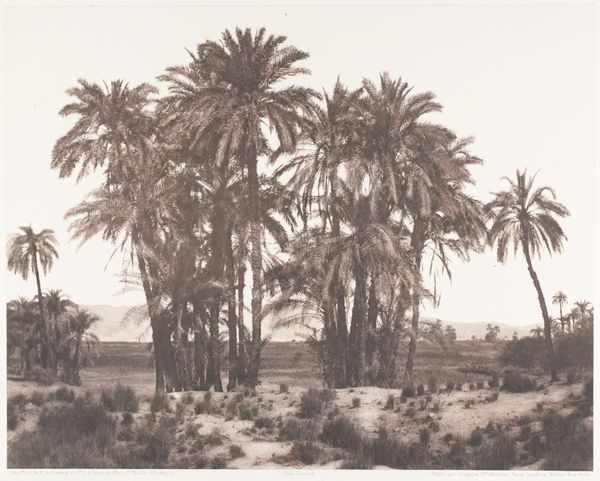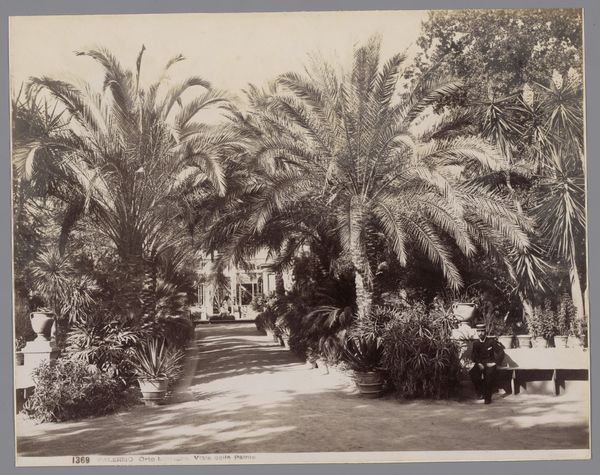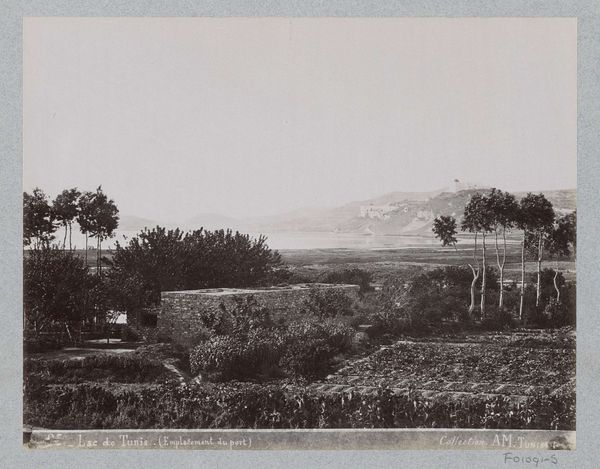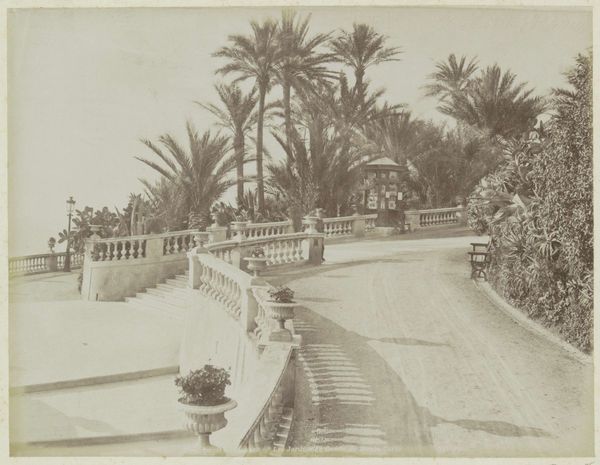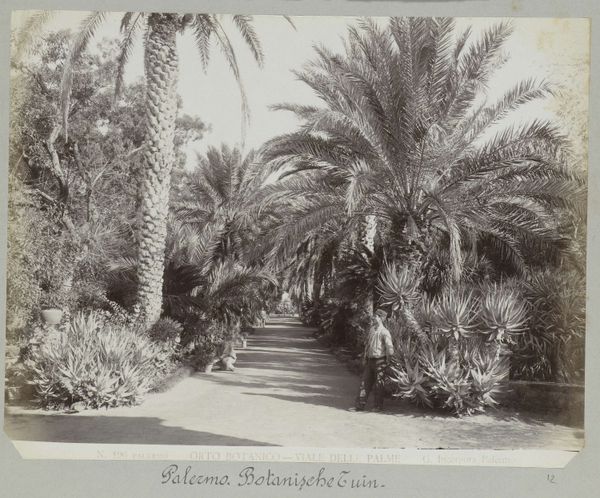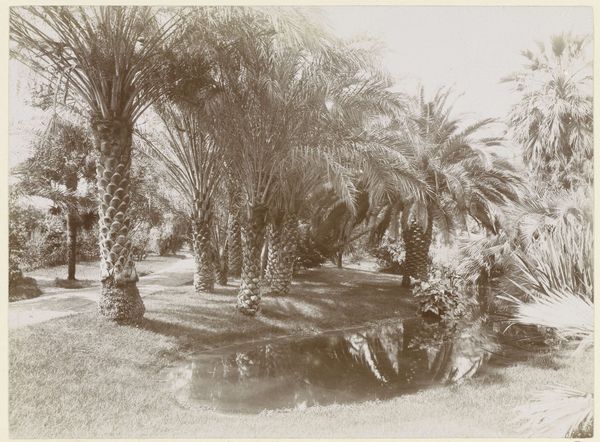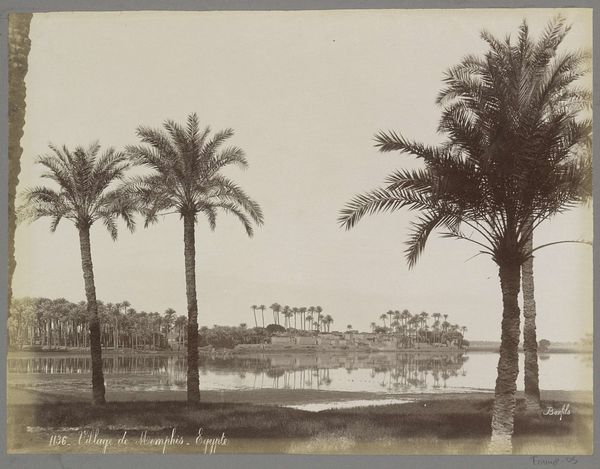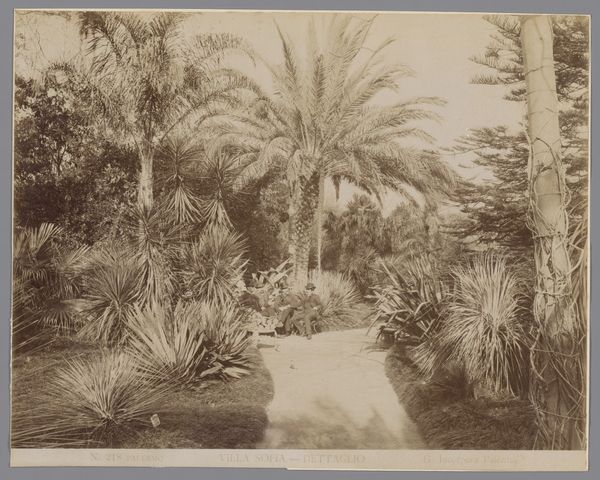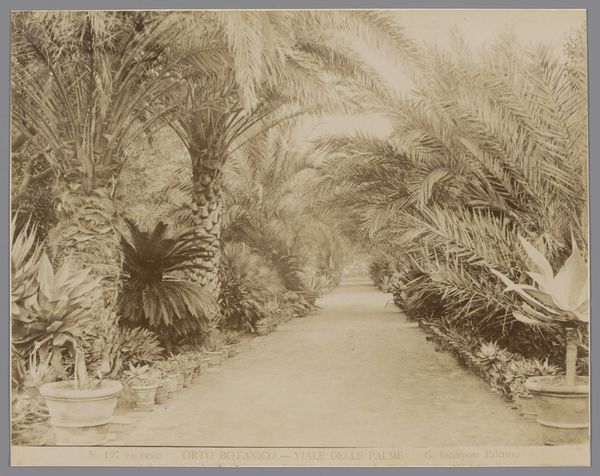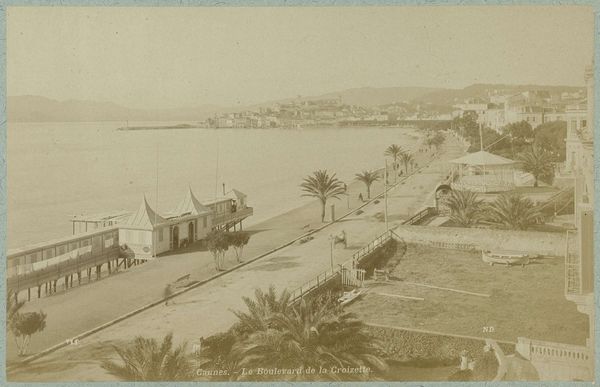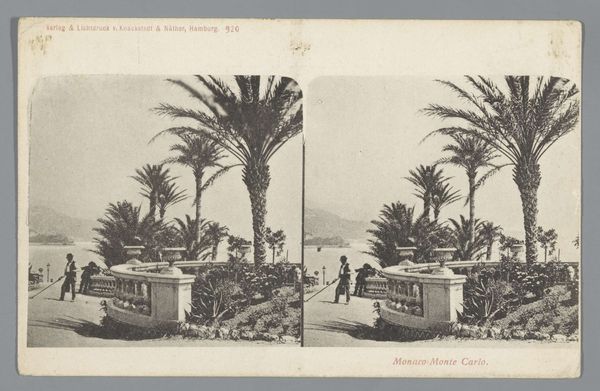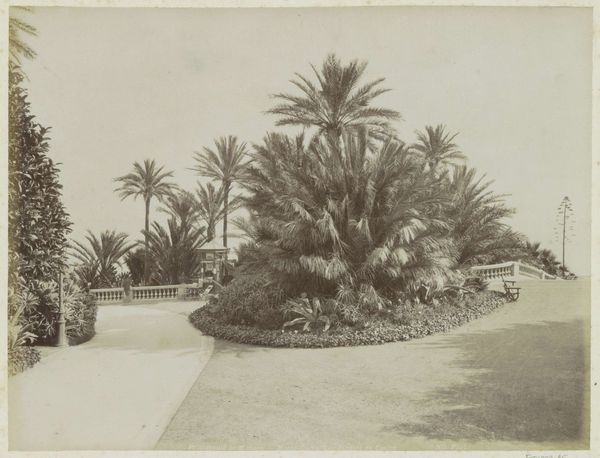
photography
#
garden
#
landscape
#
photography
#
orientalism
#
cityscape
Dimensions: height 120 mm, width 186 mm, height 314 mm, width 420 mm
Copyright: Rijks Museum: Open Domain
Curator: This photograph, dating from 1863 to 1891, captures the casino gardens in Monte Carlo. It is by Neurdein Frères, a photographic firm known for their cityscapes and landscapes during that era. Editor: What strikes me immediately is the image's composition: the lush, almost overwhelming density of the foliage contrasted with the geometric lines of the architecture and the implied openness of the bay. It’s a controlled explosion of plant life. Curator: Exactly. Monte Carlo, during this time, was strategically transforming itself into a leisure destination for the European elite, and this image reflects those ambitions. The garden, carefully planned, offers an illusion of paradise achieved through human intervention. It signifies the new colonial relationship with exotic places. Editor: The sepia tone, the way the light filters through the palm fronds, definitely evokes an Orientalist sentiment, fitting the time. We see how photographic technology creates depth—layers of vegetation in the midground before a blurry ocean landscape and distant mountains. Curator: You are right; Orientalism shaped artistic styles, which became desirable within the Western markets. What strikes me is how staged these photographs would have been. It served not just as documentation, but as a carefully manufactured advertisement aimed at a specific wealthy demographic. Editor: Consider the photographer's framing; our eye moves from the structured pathways into a tangle of exotic plants. The interplay of shadows and highlights animates forms. There is definitely an interplay between the manmade and natural structures. Curator: These manicured gardens became visual representations of power and wealth—an intentional projection. Think of it as an early form of destination marketing. The Neurdein brothers were contributing to constructing an idealized version of Monte Carlo for public consumption, a key element for urban and colonial propaganda. Editor: Ultimately, it is an intricate arrangement of line, form, light, and shadow that holds our eye. Regardless of its intentions, one finds oneself drawn in the rich tones. Curator: I agree; what we must appreciate is its profound role in actively promoting both place and a lifestyle that has since become ingrained in the history and culture of the Western imagination.
Comments
No comments
Be the first to comment and join the conversation on the ultimate creative platform.

